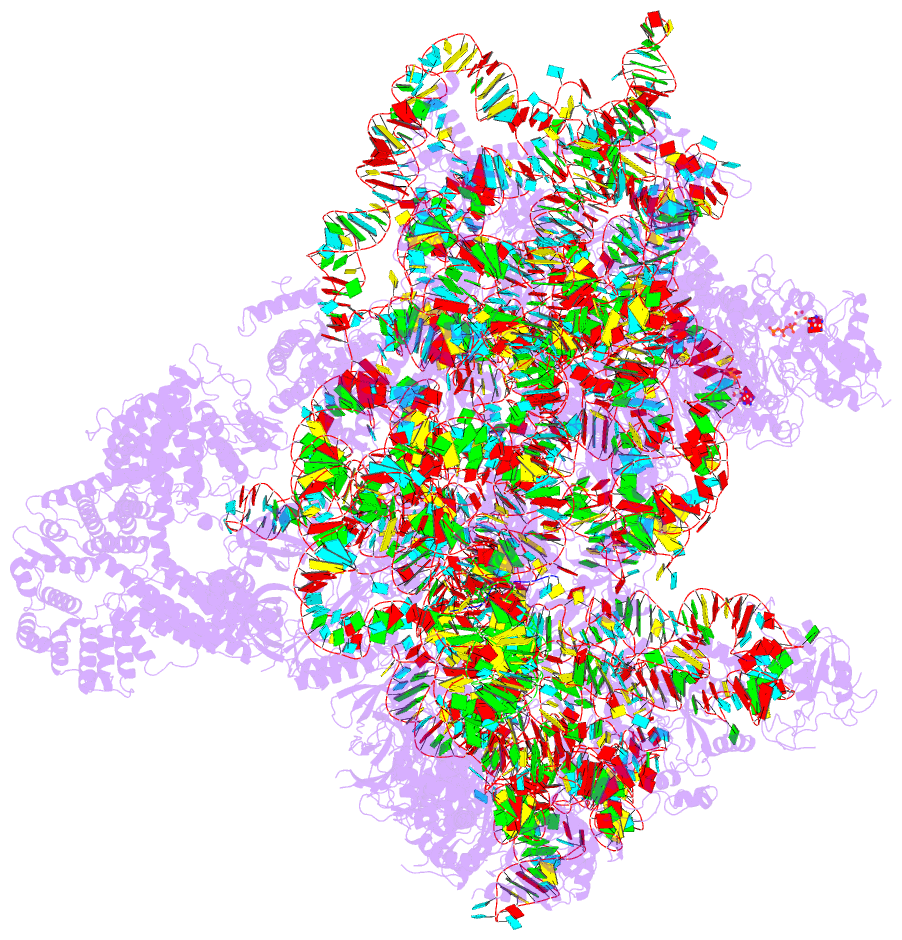Summary information and primary citation
- PDB-id
- 6zu9; DSSR-derived features in text and JSON formats
- Class
- ribosome
- Method
- cryo-EM (6.2 Å)
- Summary
- Structure of a yeast abce1-bound 48s initiation complex
- Reference
- Kratzat H, Mackens-Kiani T, Ameismeier M, Potocnjak M, Cheng J, Dacheux E, Namane A, Berninghausen O, Herzog F, Fromont-Racine M, Becker T, Beckmann R (2020): "A structural inventory of native ribosomal ABCE1-43S pre-initiation complexes." Embo J., e105179. doi: 10.15252/embj.2020105179.
- Abstract
- In eukaryotic translation, termination and ribosome recycling phases are linked to subsequent initiation of a new round of translation by persistence of several factors at ribosomal sub-complexes. These comprise/include the large eIF3 complex, eIF3j (Hcr1 in yeast) and the ATP-binding cassette protein ABCE1 (Rli1 in yeast). The ATPase is mainly active as a recycling factor, but it can remain bound to the dissociated 40S subunit until formation of the next 43S pre-initiation complexes. However, its functional role and native architectural context remains largely enigmatic. Here, we present an architectural inventory of native yeast and human ABCE1-containing pre-initiation complexes by cryo-EM. We found that ABCE1 was mostly associated with early 43S, but also with later 48S phases of initiation. It adopted a novel hybrid conformation of its nucleotide-binding domains, while interacting with the N-terminus of eIF3j. Further, eIF3j occupied the mRNA entry channel via its ultimate C-terminus providing a structural explanation for its antagonistic role with respect to mRNA binding. Overall, the native human samples provide a near-complete molecular picture of the architecture and sophisticated interaction network of the 43S-bound eIF3 complex and the eIF2 ternary complex containing the initiator tRNA.





